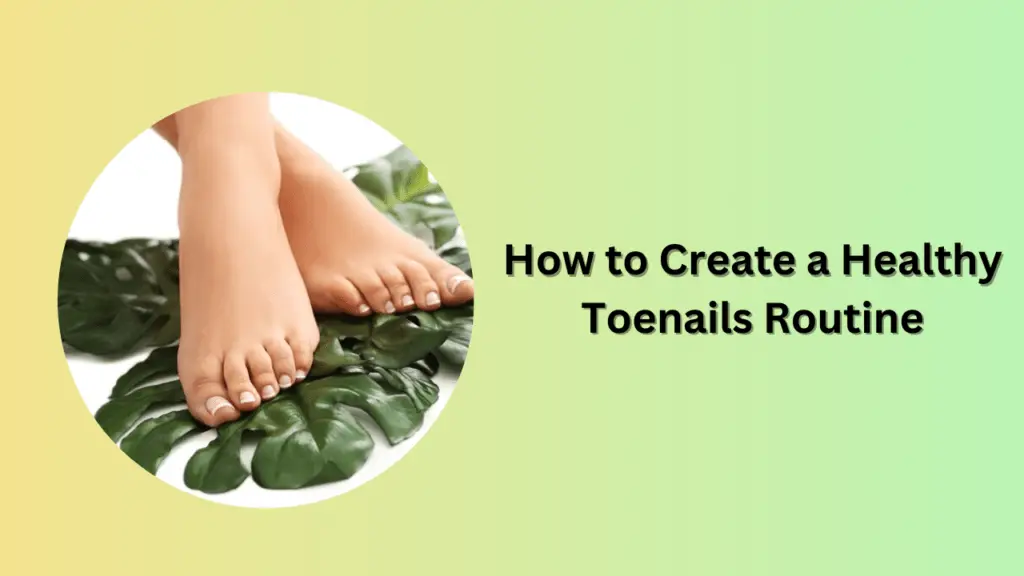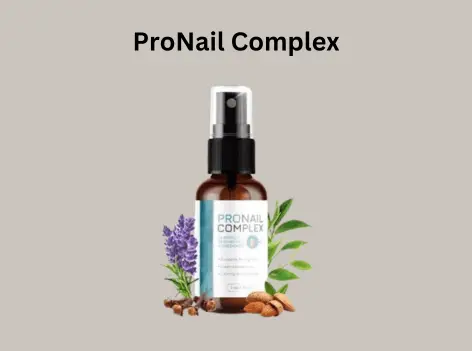Table of Contents
ToggleIntroduction
Have you ever stopped to think about the gems beneath your socks? That’s right — your toenails! These often overlooked parts of our bodies hold more importance than we realize. Maintaining healthy toenails is not just about aesthetics; it’s also crucial for foot health and hygiene. So, let’s dive into the world of toenail care and discover how to create a routine that will keep your toenails in top shape!
Understanding the Importance of Healthy Toenails
Our toenails may seem like a small part of our bodies, but they play a significant role in protecting the tips of our toes from injuries. In addition, the condition of our toenails can provide valuable insights into our overall health. For example, changes in color, texture, or thickness of the toenails can be indicators of health issues such as fungal infections or nutritional deficiencies.
Taking care of your toenails is not just about looking good; it’s about feeling good and staying healthy. By establishing a regular toenail care routine, you can prevent common toenail problems and maintain optimal foot health.
ProNail Complex
- Doctor-formulated mist spray for healthy nails.
- Combines potent oils and skin-repairing vitamins.
- Strengthens, nourishes, and protects nails.
- Fights fungal infections and brittle nails.
- Promotes optimal nail health.
- Experience stronger, more beautiful nails today with ProNail Complex.
Steps to Create a Healthy Toenail Routine
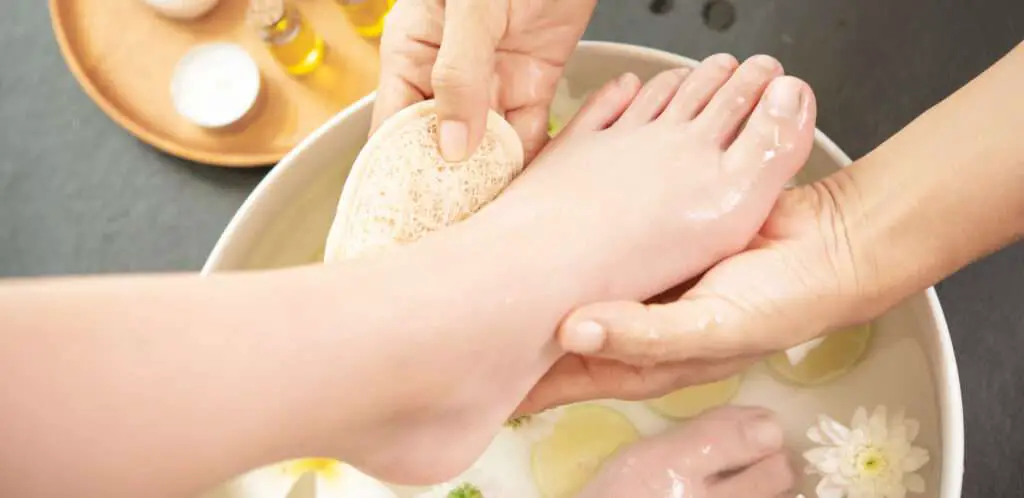
Step 1: Proper Hygiene
Good hygiene is the foundation of healthy toenails. To maintain clean and healthy nails, follow these simple steps:
- Make sure to wash your feet and toenails every day with soap and water.
- To avoid fungal growth, make sure to dry your feet thoroughly, especially between the toes.
- Regularly trim your toenails, cutting them straight across to prevent ingrown toenails.
- Use a clean nail clipper and file to shape your nails.
Step 2: Moisturize Regularly
Just like the skin on the rest of your body, your toenails need moisture to stay healthy. Incorporate the following tips into your toenail care routine:
- Apply a moisturizing cream or lotion to your toenails and cuticles to keep them hydrated.
- Avoid using harsh chemicals or acetone-based nail polish removers that can dry out your nails.
- Choose nail products that are nourishing and gentle on your nails.
Step 3: Wear Proper Footwear
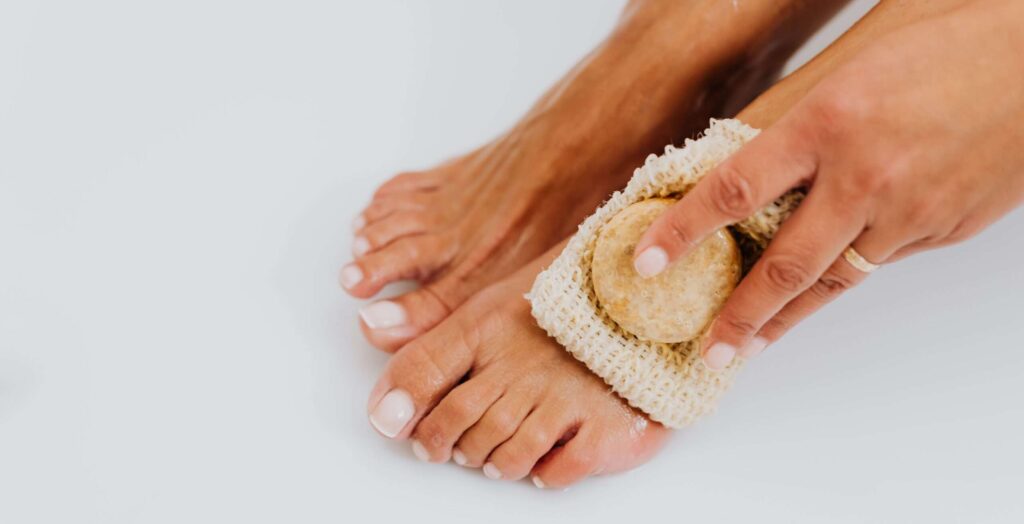
The health of your toenails can be greatly impacted by the shoes you wear. Follow these guidelines to ensure that your footwear is toenail-friendly:
- Wear comfortable shoes that provide ample room for your toes to prevent crowding and pressure on the nails.
- Choose breathable footwear that allows air circulation to reduce the risk of fungal infections.
- Avoid wearing tight, ill-fitting shoes that can cause damage to your toenails.
Step 4: Maintain a Balanced Diet
Nutrition plays a crucial role in the health of your nails, including your toenails. Incorporate the following nutrient-rich foods into your diet to promote strong and healthy toenails:
- Foods rich in biotin, such as eggs, nuts, and leafy greens, can help strengthen your nails.
- Include protein sources like lean meat, fish, and legumes to support nail growth and repair.
- Drink an adequate amount of water to stay hydrated, which benefits not only your nails but your entire body.
Step 5: Be Mindful of Symptoms
Keeping an eye out for changes in the appearance or texture of your toenails can help you catch potential issues early. Look out for signs such as discoloration, thickening, or brittleness, which may indicate underlying problems like toenail fungus or psoriasis.
Common causes of unhealthy toenails
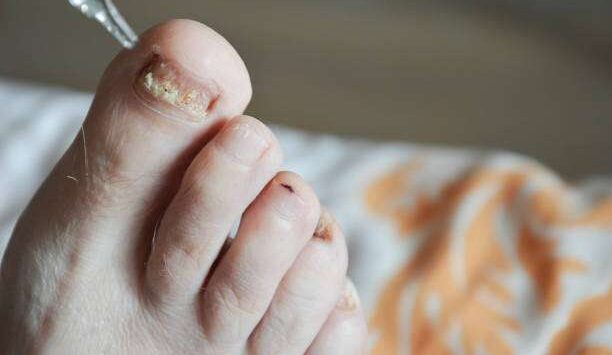
Fungal Infections
Fungal nail infections, known as onychomycosis, can cause discoloration, thickening, and crumbling of toenails. These infections are often caused by microscopic fungi and can spread to other nails or skin.
Ingrown Toenails
When the edge of a toenail grows into the surrounding skin, it can lead to inflammation, redness, pain, and potential infection. Causes include cutting toenails too short, wearing tight shoes, excessive sweating, genetic factors, obesity, diabetes, and certain medications.
Thickened Toenails
Toenails can become thick and hardened due to age, fungal infections, injuries, or health conditions like psoriasis or diabetes. Thickened nails can be brittle, prone to cracking, and may lift from the nail bed, causing discomfort and pain.
Trauma or Injury
Trauma or injury to the toenail can result in discoloration, black or purple toenails, and even lead to subungual hematoma (bruise under the nail). In some cases, dark streaks under the nail can indicate a severe skin cancer called melanoma.
Nutritional Deficiencies
White bands or stripes on toenails may suggest a lack of protein in the diet, while white nails could indicate anemia. Changes in nail color, texture, or shape can also be linked to various health issues like circulatory problems, diabetes, or zinc deficiency.
Other Health Conditions
Health issues like Raynaud’s disease, heart problems, lung disease, arthritis, or thyroid disease can manifest in toenail changes. For instance, blue or purple toenails may indicate circulatory issues, while spoon-shaped indents can signal iron deficiency, lupus, or other diseases.
Some treatments for unhealthy toenails
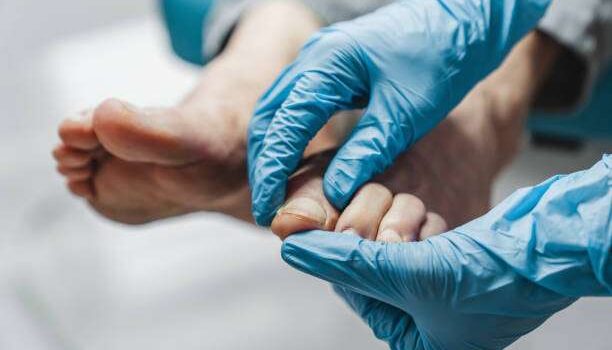
Home Remedies
- Tea tree oil or eucalyptus oil: Both have antifungal properties and can be applied to the affected nail several times daily.
- Ozonized sunflower oil: This oil has shown effectiveness in treating fungal toenail infections.
- Baking soda: Soaking thick yellow toenails in a mixture of baking soda and water can help combat fungal infections.
- 100% tea tree oil: Using this oil twice a day on the affected toenails can alleviate symptoms.
- Olive leaf extract: Infected toenails can be treated with antibacterial and antifungal effects by applying it multiple times daily.
- Coconut oil: Melted coconut oil can be used to heal thick yellow toenails.
Over-the-Counter Treatments
- Antifungal creams, ointments, and nail polish: These can be purchased without a prescription and applied to the affected nails.
- Tolnaftate, Clotrimazole, and Terbinafine (Lamisil): These ingredients are commonly found in over-the-counter treatments for toenail fungus.
Prescription Medications
- Topical treatments: Your doctor may prescribe a medicated nail cream to apply to the affected nail bed.
- Oral antifungal medications: In severe cases, oral antifungal pills may be prescribed, but they come with potential side effects and require monitoring for liver function.
Conclusion
Your toenails may seem like a small part of your body, but they deserve proper care and attention to maintain overall foot health. By establishing a consistent toenail care routine that focuses on hygiene, moisture, footwear, nutrition, and symptom awareness, you can keep your toenails strong, healthy, and beautiful.
Remember, a healthy toenail routine is not just about pampering yourself; it’s about showing love and care to an often neglected part of your body. So, why not start today and give your toenails the attention they deserve? Your feet will thank you for it!
Let’s put our best foot forward and embark on a journey towards healthy toenails together!
